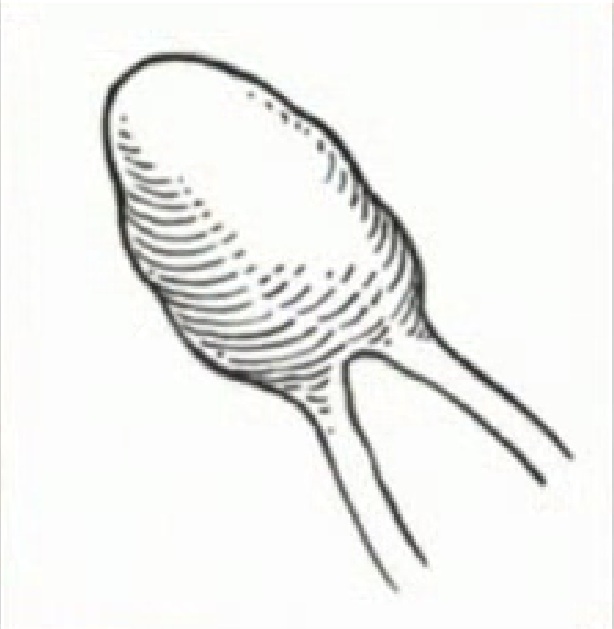When we think of the word “eye,” we think of the well-developed organs in our faces that are capable of sensing light in such detail that they can form real-time images of our surroundings. To say that the parietal eye falls in this category would be misleading. Really, a better descriptor would be “light sensing organ.” It is part of the epithalamus of the brain (hence its location atop the skull) and functions not in sight, but rather in circadian rhythm regulation.
 |
| Get your mind out of the gutter, it's the pineal gland. (humanityhealing.net) |
The pineal gland is part of the epithalamaus and produces hormones. These hormones are specifically functional in what I can best describe as “body timing.” Wake/sleep and reproductive cycles, and other cycles that fall under the blanket of circadian rhythms. The parietal eye is connected to this gland and feeds it information on light surroundings. Basically, it senses day-length so that the brain can figure out what time of the year it is so it can regulate hormonal cycles.
We humans don’t really have seasonal hormonal cycles, unless you count the female ovulation cycle. And that is based off of the lunar cycle, not photoperiod (day length). So we don’t really need a season-sensing mechanism. But think of how frogs, for instance, have breeding seasons. How do they know what season it is? Frogs don’t keep datebooks or calendars (that we know of), and it would be embarrassing to go around humping your frog friends at the wrong time of year. This mechanism is a component of the evolutionary solution.
 |
| Can you spot the parietal eye on this anole? (wikicommons) |
The parietal eye exists in varying degrees across the herpetological fauna. Some salamanders have been found to have very poorly developed ones, while Tuataras (a distinct and pretty nifty lineage of lizards) have parietal eyes with structures comparable to a retina and lens! In frogs, it appears as just a little light-colored spot between the eyes. In lizards, it usually is a tiny light-colored spot on the parietal scale right on top of the skull. In all cases, it is covered by clearish skin so that light can penetrate.
 |
| Bullfrog's parietal eye (wikicommons) |
And might I mention that you too have a pineal gland. You do not have a light-sensing organ on the top of your head, but you certainly have the organ from which it emerged in other vertebrates. Or, you could look at it conversely. Is our pineal gland actually a remnant of a parietal eye? A question worth looking into…
If you have a reptile-loving friend who has a lizard, ask them if you can observe their pet’s parietal eye. If they look at you like you’re a crazy person, I hope that you will lay some serious parietal-eye facts down. Spread the knowledge.

No comments:
Post a Comment